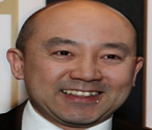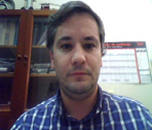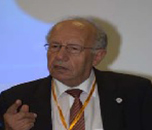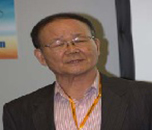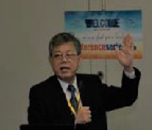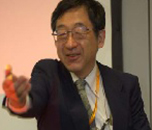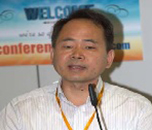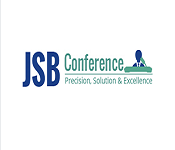Power Engineering 2019
About Conference
Euroscicon warmly welcomes you to attend the 4th International Conference on Power and Energy Engineering during November 04-05, 2019 Chicago, USA.
Power Engineering Conference 2019 is a specially designed cluster of a program that provides a common platform where industry meets academia to discuss the recent issues and happening. It serves as a bridge between researchers from academia and industry enhanced by its well organized scientific sessions, plenary lectures, poster presentations, world-class exhibitions, diverse symposiums, highly enriched workshops and B2B meetings. Also, to facilitate better understanding about the technological developments and scientific advancements across the world by simultaneously equating with the pace of science, technology and business areas in the field of Power and Energy Engineering.
The relative novel nature of this conference is to bring the advancement in the field of utilization of natural resources. We cordially invite all the participants interested in sharing their knowledge and research in the arena of renewable energy and environmental sciences.
Why to Attend:
Power Engineering 2019 offers a fantastic opportunity to meet and make new contacts in the field of Power and Energy Engineering, by providing collaboration spaces and break-out rooms with tea and lunch for delegates between sessions with invaluable networking time for you. It allows delegates to have issues addressed on Power and Energy Engineering by recognized global experts who are up to date with the latest developments in the Power and Energy field and provide a premier technical forum for reporting and learning about the latest research and development, as well as for launching new technologies, applications and the effectiveness of various regulatory programs towards Power and Energy Engineering.
Power Engineering 2019 Conference brings together Directors, Professors, Professionals, CEO’s, Presidents, Vice-presidents, Business Delegates, Market Leaders from allied industries and companies, Students and Researchers from all areas of Power Engineering, Energy Engineering, Electrical Engineering, Mechanical Engineering, Chemistry, Physics and Environmental Engineering research and business.
Target Audience:
1. Directors of Power Engineering and Energy Engineering
2. Professors
3. Professionals
4. CEO’s
5. Presidents
6. Vice-presidents
7. Business Delegates
8. Market Leaders
9. Mechanical Engineers
10. Electrical Engineers
11. Students from Academia
12. Researchers in the field of Power Engineering, Energy Engineering, Electrical Engineering, Mechanical Engineering, Chemistry, Physics and Environmental Engineering research and business advertising and Promotion Agency Executives.
Sessions/ Tracks
Power Engineering
Power Engineering is a part of Electrical Engineering. It manages the generation, transmission and appropriation of electrical gadgets and electric power associated with such frameworks including generators, engines, and transformers. It additionally shows the standards and reasonable parts of changing over electrical power starting with one shape then onto the next. Power Engineering likewise instructs us how power electronics system and sustainable power source assets will enhance and change electric power systems. Bolstering the power created at various areas over long separations into power frameworks frequently calls for enhanced power transmission and dissemination arrangements. In spite of the difficulties it presents, be that as it may, interconnecting of various locales, nations or even continents remain a feasible alternative for giving these zones affordable access to control. As an answer supplier with broad involvement in each part of intensity transmission and circulation, Siemens has officially actualized an expansive number of activities connecting power frameworks or interfacing decentralized creating units to the network. For each situation, conditions were novel.

Power System
The improvement of the current electrical energy system took a couple of hundreds of years. Current electric power systems have three separate parts - generation, transmission and distribution. Electric power is created at the power producing stations by synchronous alternators that are typically determined either by steam or hydro turbines. Most extreme power age happens at creating stations that may contain more than one alternator-turbine blend. Depending upon the kind of fuel utilized, the creating stations are classified as hydro, thermal, nuclear and so on. The greater part of these creating stations are remotely found. Also, that is the reason the electric power produced at any station must be transmitted over an extensive separation to stack focuses that are normally towns or urban areas. This is known as the power transmission. Presently days, control transmission towers and transmission lines are extremely basic sights in provincial zones.

Power Transmission and Distribution
Power is produced at power plants. It travels through a complex system, called the grid, of power substations, transformers, and electrical cables that associate power makers and purchasers. The vast majority of the neighborhood frameworks are interconnected for dependability and business purposes, shaping bigger, increasingly reliable systems that improve the coordination and arranging of power supply. Age, conveyance and use of electric vitality and power is as yet a standout amongst the most energizing and testing fields of electrical supply. Stunning innovative improvements of our age are very needy upon a solid, protected and monetary supply of electrical vitality. Power is ignored a transmission system of high voltage lines. For the most part, these lines keep running into many kilometers and convey the power into a typical power pool called the grid. Grid is associated with load focuses over a sub-transmission network lines.

Power Electronics
Power Electronics is the specialty of changing electrical power starting with one shape then onto the next in a perfect, effective, strong and minimal way for helpful use. In an advanced building, passenger lift outfitted with a Variable-Voltage-Variable-Speed enlistment machine drive that offers an agreeable ride and stops precisely at the floor level. With diminished weights on the engine, it devours less power and defilement of the utility mains. In portable sets control the board IC's dealing with Power Electronic standards, intended to deal with constrained milliwatts, vast direct audio amplifiers are appraised at a couple of thousand watts. Regularly Power electronic converters work from the utility mains are presented to the unsettling influences related with it. The drifters related with exchanging circuits and blames that happen at the heap point pressure gadgets and converters. Consequently, a few protection schemes must be fused in a converter. It is basic to secure both the control terminals and the primary terminals. Power semiconductor gadgets are generally secured against voltage spike or over-voltage, over-current, door under voltage, over voltage at entryway, excessive temperature rise, electro-static discharge.

Power and Energy Market
In monetary terms, power is an item which is fit for being sold, purchased and exchanged. A power showcase is a framework empowering through offers to purchase, through offers to move, buys, deals, and transient exchanges, by and large as budgetary or commitment swaps. Offers use free market movement benchmarks to set the cost. Whole deal trades are contracts like power purchase understandings and generally saw as private bi-parallel trades between counterparties. Discount dealings in power are typically settled and cleared by the market head or an uncommon reason self-ruling component blamed exclusively for that limit. Market chairmen don't clear trades yet consistently require learning of the trade to keep up period and load change. The products inside an electric market overall include two sorts: power and vitality. Power is the metered net electrical swapping scale at some random minute and is estimated in megawatts. Vitality is control that travels through a metered point for a given period and is estimated in megawatt-hours. Moreover, for most genuine directors, there are markets for transmission blockage and power subordinates, for instance, control prospects and choices, which are viably traded. These business parts made in view of the reconstructing of electric power systems around the world. This system has normally proceeded in parallel with the reconstructing of gaseous petroleum markets.

Battery Technologies
A battery can change chemical energy into electric energy by putting certain synthetic compounds in contact with one another with a particular goal in mind. Electrons, which are minor parts of an atoms will go starting with one sort of compound then onto the next under the right conditions. Right when electrons stream, this produces an electrical flow that can control something. The capacity of a battery is to put the correct synthetic substances in the correct connections, and afterward it puts a divider between them. At the point when the opposite sides of a battery are connected by a wire or another conduit then the electrons begins to flow. Batteries come in various styles. We are maybe most acquainted with single-utilize alkaline batteries. NASA shuttle for the most part utilize battery-powered nickel-hydride or nickel-cadmium batteries like those found in PDAs or smart phones. DS1 utilizes nickel-hydrogen batteries. Designers consider batteries a place to store power in a compound frame. Batteries will in general exhaust their charge rapidly. DS1 can last from 30 minutes to three hours running absolutely on battery control before the batteries should be revived from the sun oriented boards. These batteries are restored an enormous number of times over the life of the shuttle.

Fuel Cell and Combustion Technologies
The particles of the two gases oxygen and hydrogen are put alongside each other, they precipitously combine to shape water. This mix results in the arrival of an immense measure of vitality and lets an electron to lose. In a power module, the oxygen and hydrogen are isolated by a film. The film catches the free electrons amid the synthetic response that shapes water, which controls anything hooked to the power module. It also discharges little heat. Energy units are an exceptional power source. They store energy in two naturally happening components i.e., oxygen and hydrogen, and frame a solitary waste item i.e., unadulterated water. Refueling a power device implies giving more hydrogen and oxygen. By the assistance of an outside wellspring of power for instance a sun oriented board, one can part the waste water return it into its segment parts and use it some other time as fuel. Power modules have been being used in the space program for quite a while. Energy units works like a battery, however they don't require electrical energizing. When those synthetic concoctions lapse, the battery bites the dust. Then again, an energy unit gets the synthetic compounds, it utilizes all things considered; so that, it won't run out. Energy units can create control inconclusively, in the event that they have fuel to utilize. Each power device has two terminals, one negative, called the cathode, and one positive, called the anode. These are disconnected by an electrolyte obstruction. Oxygen goes to the cathode side, while Fuel goes to the anode side. At the point when the two synthetics hit the electrolyte fence, they respond, torn separated their electrons, and deliver an electric flow.

Energy Storage
Essentially, energy storage systems are designed in one of two different ways: a power configuration or a energy configuration, contingent upon their planned application. In a power design, the batteries are utilized to infuse a lot of intensity into the network in a generally brief time, which requires a high inverter-to-battery proportion. A common application is recreate a turbine increase for frequency regulation, spinning reserve, or black start capacity. For an all-inclusive measure of time, the batteries are utilized to infuse a consistent measure of intensity into the network. This application has a low inverter-to-battery proportion and would commonly be utilized for tending to issues in which control request changes are happening over a period up to a few hours, or moving reduced PV creation to later in the day. This is practiced by altering the proportion of inverters to batteries in the system.

Sustainable Energy Technogies
Sustainable energy technologies deliver Renewable, clean energy from sources, for example, the sun, the wind, plants, and water. As per the Energy Information Administration, in 2007, sustainable sources of energy represented about 7% of complete energy utilization and 9.4% of absolute power age in the United States. Sustainable energy technologies can possibly reinforce the entire country's energy security, enhance natural quality, and add to a solid energy economy. Sustainable technologies allow us to create power, cool and heat our buildings and to travel by sea, arrive and conceivably additionally via air without delivering risky ozone depleting substances and different types of contamination.

a. domestic lighting
b. street lighting
c. water pumping
d. desalination of salty water
e. powering of remote telecommunication repeater stations

Wind Energy
Wind energy is one kind of solar energy which defines the process by which wind is used to generate electricity. Wind turbines change the kinetic energy into mechanical energy. Generator can convert mechanical energy into electricity. Wind energy is a clean fuel source and doesn't pollute the air like power plants that depends on combustion of fossil fuels, such as natural gas or coal. Wind turbines do not damage the atmosphere that increase health problems like asthma or create greenhouse gases or acid rain. Batteries can store electricity which is generated by wind turbines and these can be used in future when there is no wind. In this situation, energy produced is converted into compressed air. This is generally stored in underground caverns or in large above-ground tanks. One single wind turbine can be enough to generate energy for a household. As wind is the source of energy that is renewable and non-polluting, wind turbines generate energy but it does not use fossil fuels as well as without producing radioactive or toxic waste or greenhouse gases. Taking the figures from the Global Wind Energy Council, we have formed the following list of eight countries that generate the most wind energy in the world.
1. France. Cumulative installed wind power capacity: 10,358 megawatts.
2. Canada.
3. United Kingdom.
4. Spain.
Energy Materials
Rapid reduction of fossil fuels and increasing environmental concerns make energy one of the extreme challenges facing civilization in the 21st century. The Clean Energy Materials Thrust is focused on the design and progress of high performance materials for alternative energy technologies and developing an important understanding of their structure-property-performance relationships. Thrust includes materials for fuel cells, supercapacitors, lithium ion batteries, solar energy conversion, photovoltaics, hydrogen production and storage, and thermoelectric. Growing energy needs of the country require improved efforts on developing materials and technologies which focuses on energy generation, energy harvesting, energy conversion and energy storage. Currently energy materials personify wide selection of novel and advanced materials for the generation and storage of electric power. Energy Materials includes fuel cells, batteries, photovoltaics, thermo-electrics, super-capacitors, hydrogen technologies, photo-catalysis, solar power technologies, magnetic refrigeration and piezoelectric materials. Energy generation, distribution and management are the quickest evolving industries of recent times. The demand to develop parts and sub-assemblies for novel product across the energy sector is increasing.

Market Analysis
The global industrial filtration market is projected to reach USD 35.47 Billion by 2023, growing at a CAGR of 6.50%, from an estimated USD 25.89 Billion in 2018. This growth can be attributed to the growth in industrialization and urbanization, stringent regulations pertaining to emissions and treatment of industrial waste, and requirement of safe working environment in industrial facilities. To enable an in-depth understanding of the competitive landscape, the report includes the profiles of some of the top players in the industrial filtration market. These players include Alfa Laval (Sweden), Ahlstrom-Munksjö (Finland), Donaldson (US), Eaton (Ireland), Freudenberg (Germany), Mann+Hummel (Germany), Pall Corporation (US), and Parker Hannifin (US). The leading players are trying to increase their regional presence in the developed economies and are adopting various strategies to increase their market shares.
The global power management system market was valued at USD 3.53 Billion in 2016 and is projected to reach USD 5.26 Billion by 2022, growing at a CAGR of 6.88%, during the forecast period. The increasing demand for energy efficiency in the manufacturing sector, increasing installation of renewables in the industry, and rising adoption of IoT and cloud-based platforms are driving the power management system market globally. To enable an in-depth understanding of the competitive landscape, the report includes the profiles of some of the top players in the power management system market. These include ABB (Switzerland), Eaton (Ireland), Siemens (Germany), GE (US), ETAP (US), Wartsila (Finland), and Mitsubishi (Japan). The leading players are trying to understand the markets in developing economies and are adopting various strategies to increase their market shares.
Japan and Tokyo Market:-
The electric power industry in Japan covers the generation, transmission, appropriation, and clearance of electric vitality in Japan. Japan devoured 995.26 TWh of power in 2014. Before the 2011 Fukushima Daiichi atomic debacle, around 33% of power in the nation was created by nuclear power. In the next years, most atomic power plants have been on hold, being supplanted generally by coal and petroleum gas. Solar power is a developing wellspring of power, and Japan has the third biggest sun powered PV introduced limit with around 50 GW starting at 2017.
Japan has the second biggest pumped hydro capacity storage installed on the planet after China. The electrical matrix in Japan is separated, with no universal associations, and comprises of two wide zone synchronous networks which keep running at various frequencies and are associated by HVDC associations. This extensively confines the measure of power that can be transmitted between the north and south of the nation.
As per the International Energy Agency the Japan net creation of power was 1,041 TWh in 2009, making it the world's third biggest maker of power with 5.2% of the world's electricity. After Fukushima, Japan foreign made and extra 10 million short huge amounts of coal and melted gaseous petrol imports rose 24% somewhere in the range of 2010 and 2012 generally expended in the power part of 64%
Learn More
Recommended EuroSciCon conferences
Clinical pathology , Feb 27-28, 2019 Czech Republic | Euro Gastro 2019, March 11-12, 2019 Netherlands | Dental & Dental Hygiene, March 25-26, 2019 Hungary | Data Analytics , April 08-09, 2019 France | Dermatology 2018, April 18-19, 2019 France | Microbiology and Virology, April 22-23, 2019 Greece | Infectious Diseases & Std-Aids 2019April 15-16, 2019 France | Quantum & Plasma physics , May 09-10, 2019 Sweden | Advance Nursing Practice, May 23-24, 2019 Sweden | Psychiatry & Psychology , April 11-12, 2019 France | Renewable and Green Energy, March 21-22, 2019 Netherlands| Nano 2019, Oct 07-09, 2019, Japan | Advanced Energy Materials, Oct 07-09, 2019 Japan | Materials Science & Engineering, June 04-06, 2019 France | Nursing Diagnosis, July 25-26, 2019 Luxembourg |Nursing & Midwifery, May 23-24, 2019 Sweden | Nuclear Medicine & Radiation Therapy, June 10-12, 2019 Netherlands
Europe Universities:
University of Bristol| King's College London| University of Stirling| Robert Gordon University| Cardiff University| University of Essex | University of the Arts London | University College London | University of Kent | The University of Warwick | The University of Manchester | Swansea University | Alliance Manchester Business School | Lancaster University | The University of Edinburgh | University of Cambridge | University of Oxford | University of Glasgow | Newcastle University | University of Liverpool | Loughborough University | University of Leicester | University of Surrey | University of Strathclyde | Aston University | Coventry University | University off Portsmouth | University of Hull | Northumbria University At Newcastle | University of Huddersfield | University of Central Lancashire| Leeds Beckett University | London Southbank University | University of Birmingham | University of Leeds | University of Southampton | Queen Mary University of London | University of Aberdeen | The University of Exeter | University of Bath | University of Sussex | University of Dundee | Bangor University | Keele University | University of Bradford | Plymouth University | University of Hertfordshire | University of Salford | University of Bedfordshire
USA Universities:
George Washington University | University at Buffalo Suny | Hofstra University | Stanford University | Harvard University | California University | University of Chicago | Yale University | University of Pennsylvania | University of Michigan | University of Wisconsin-Madison | Boston University | The Ohio State University | University of South Florida | University of Central Florida | Johns Hopkins University | Northwestern University | Carnegie Mellon University | Brown University | University of Texas | Georgia Institute of Technology | University of North Carolina | Rice University | Pennsylvania State University | Washington University | University of Maryland| University of Pittsburgh | Emory University | University of Minnesota | University of Florida | University of Colorado Boulder | University of Rochester | Texas A&M University | University of Illinois | Arizona State University | Vanderbilt University | Case Western Reserve University | University of Notre Dame | Georgetown University | The University of Arizona | Tufts University | University of Massachusetts Amherst | University of Miami | North Carolina State University | Rutgers University | Indiana University | The Katz School At Yeshiva University | University of Hawaii | Northeastern University | University of Kansas | University of Utah | University of lowa | University of Connecticut | University of Delaware | Wake Forest University
Asian Universities:
Tsinghua University | Fudan University | Shanghai Jiao Tong University | Zhejiang University | Nanjing University | Huazhong University | University of Shanghai For Science and Technology | Shenzhen University | Ural Federa University | Edity Cowan University | University of Tasmania | University of Wollongong | The University of Western Australia | National University of Singapore | The University of Sydney | Novosibirsk State University | The Australian National University | Monash University | The University of Newcastle | Tomsk State University | Russian State Social University | Bond University | Deakin University | Griffith University | Korea University | Victoria University | Waseda University | University of South Australia | Curtin University | Singapore Management University | Seoul National University | The University of Adelaide | Murdoch University | University of Canberra | Western Sydney University | Lobachevsky University | University of Santo Tomas | Volgograd State University | SRM University | Effat University | Siberian Federal University | The University of Tokyo | Kyoto University | University of Bern | University of Basel | Charles University | Keio University | University of Tsukuba | University of Tartu | Kobe University | Sogang University | University of Delhi | Okayama University | Doshisha University | University of Calcutta
African Universities:
University of Port Elizabeth | Pan Africa Christian University | Midrand Graduate Institute | University Of Johannesburg | University Of South Wales Online Programmes through UNICAF | UNICAF University | Middlesex University Mauritius | University of the Western Cape | Rhodes University | Stellenbosch University | University of Kwazulu Natal
Power Societies
American Society of Thermal and Fluids Engineers (ASTFE) | American Society of Heating, Refrigerating, and Air-Conditioning Engineers (ASHRAE) | Association of Energy Engineers (AEE) | Combustion Institute | Thermal Engineering Society (TES) | International Thermoelectric Society (ITS) | The International Society of Heat and Mass Transfer (ICHMT) | Indian Society for Heat and Mass Transfer (ISHM)




